#Hans Geiger
Explore tagged Tumblr posts
Text
'The Oppenheimer movie has inevitably ignited interest in one of the most contentious episodes of modern history - the birth of a nuclear weapon which unleashed unprecedented destruction.
While the film focuses on the eponymous American physicist spearheading Allied efforts to make the atomic bomb, the team also involved British Nobel Prize winner James Chadwick.
Yet little is known about Chadwick when compared to his peers, whose names read like a who's who of school science lessons.
The shy but steely scientist is credited with discovering the neutron, before going on to lead the British contingent in the Manhattan Project, that was set up to build the atomic bomb.
As World War Two drew to a close, American bombers would drop the devices over the Japanese cities of Hiroshima and Nagasaki, instantaneously killing more than 100,000 people.
During their development, Chadwick was the only non-American with access to all of the group's research and production plants, according to experts.
He famously admitted his "only remedy" on realising the inevitability of the nuclear bomb was to take sleeping pills, which he ended up doing every night for more than 28 years.
Before his tenure at Los Alamos, Chadwick's career had developed in Manchester, often described as the birthplace of nuclear physics.
The city had become a hub of science and engineering from the onset of the Industrial Revolution in the mid-18th Century.
But Chadwick's origins 20 miles away never indicated what he would later achieve.
"He was not from any kind of wealthy background," says Dr James Sumner, a historian of technology at the University of Manchester.
"He was certainly not from a traditional academic background."
Born in the Cheshire village of Bollington in 1891, Chadwick himself described his family as poor, with his father failing to set up a business in Manchester.
During an interview later in life, he admitted losing contact with a younger brother, adding: "I'm afraid I don't have a great family feeling."
He "didn't take school very seriously" and recalled playing truant one day with his friend - the headmaster's son - "to go bird-nesting".
"I have quite a vivid memory of being caned very severely for it."
Despite this less than promising start, he later moved to a school in Manchester where he benefited from "extremely good" teaching and gained a university scholarship.
"Manchester then, as now, is a very progressive city indeed," Chadwick recalled, saying he wanted to study mathematics with "no intention whatever of reading physics".
But a mix-up, which involved sitting on the wrong interview bench and being "too shy" to ask for a subject change, inadvertently led to a successful career in physics.
He studied under Prof Ernest Rutherford, the Nobel Prize-winning New Zealander whose model of the atom is still used in schools worldwide.
"You don't let undergraduate students near the monumental, partly because the professors want all the relevant glory for themselves," says Dr Sumner.
"At that time, there were just far fewer physicists and there was more glory to go around, so people like Chadwick could make a difference very early on."
Manchester had been steadily attracting scientific prestige after John Dalton pioneered studies in atomic theory and colour blindness, while fellow student James Joule became a household name after his work in energy conservation.
"Once you've got a big name there, everyone else goes in and makes more discoveries," says Dr William Bodel, who researches nuclear technology at the university in Manchester.
Others to pass through the university included J.J. Thomson - who is credited with discovering the electron - quantum physicist Neils Bohr and Hans Geiger, co-inventor of the radiation counter.
"Chadwick was one of several who did forefront cutting edge research," says Dr Sumner.
"He is publishing forefront discoveries in the hot new science of atomic physics and that's really when his career took off."
He met Albert Einstein on occasions at a Berlin laboratory, where Chadwick was undertaking research with Geiger.
But after World War One broke out, he was imprisoned at a camp when all Englishmen were interned. He still managed to pursue his scientific interests, making a magnet as the German officers - whom he described as "extremely lenient" - turned a blind eye.
On returning to Manchester much weakened and poorer after the war, he was offered work by Rutherford and the pair soon took up opportunities at the University of Cambridge.
His life underwent another change in 1925, when he married Aileen Stewart-Brown in Liverpool and two years later, the couple had twin daughters.
As the science of physics continued to develop, Chadwick proved the existence of the neutron in the early 1930s after some speculative - or "quite silly" as he called it - experiments, following years of believing it was a main constituent of the nucleus.
"When I did the experiments, as I did off and on, they were done at odd moments and sometimes when nobody was about," he said.
Yet Dr Bodel describes the discovery as "fundamental enough to teach to school children".
"Before him, it was known there was an extra particle, but it was difficult to detect."
Chadwick said "it hadn't crossed my mind" that the breakthrough would earn him the 1935 Nobel Prize for Physics but, in his typically succinct way, he said he was "naturally, extremely pleased".
The prize came at a parting of the ways with his mentor Rutherford, as they differed about new equipment to advance their research.
Chadwick took up the offer as chair of physics at the University of Liverpool, saying he also wanted "more contact with other people with different interests".
Following the outbreak of another world war, his expertise saw him join a British working group to study the possibility of developing a nuclear weapon.
A destructive legacy
In 1943, Chadwick travelled as head of the British mission to Los Alamos in the US, where scientists were developing the first atomic bomb.
But he felt "much more needed in Washington to keep in touch with our people there and to see what was happening in different places".
He worked closely with project chief Lt General Leslie Groves, played in the film by Matt Damon, and spoke rarely about laboratory director Oppenheimer or "Oppie" as he called him.
However, there were concerns "other countries would take up the business", according to Chadwick.
"I was quite sure, you see, that the Russians could not be far behind in knowing about the project."
Chadwick believed British participation was "helpful", even though "perhaps we had not many contributions to make".
The explosions over Hiroshima and Nagasaki killed more than 100,000 people, with more dying from the impact by the end of 1945.
"It completely changed the way we operate," says Dr Bodel. "The world was not the same after the Hiroshima bomb. We can't underestimate their contribution."
Despite Chadwick's discomfort at the devastating impact, he went on to lobby for the UK to have its own nuclear arsenal after the war.
"I don't have any doubts that the bomb had to be used. And I don't feel any guilt in having taken part in producing it. Why should I? Far worse things happened than that — perhaps not many," he said.'
#Oppenheimer#James Chadwick#Los Alamos#John Dalton#Prof Ernest Rutherford#James Joule#J.J. Thomson#Niels Bohr#Hans Geiger#Albert Einstein#Leslie Groves#Matt Damon
0 notes
Text
Such was the true origin of the so-called 'Uranium Verein' ('Uranium Society').
"Brighter than a Thousand Suns: A Personal History of the Atomic Scientists" - Robert Jungk, translated by James Cleugh
#book quote#brighter than a thousand suns#robert jungk#james cleugh#nonfiction#origin story#uranium verein#uranium society#nuclear physics#erich bagge#h basche#walther bothe#kurt diebner#siegfried flugge#hans geiger#paul harteck#frederic de hoffmann#josef mattauch
0 notes
Text
Watch Jorge Lopez on YouTube Music
youtube
#hans gruber teutonic#hans gruber#gruber#hans#youtube#brad geiger#brad#geiger#celebs#los angeles#celebrity#music
7 notes
·
View notes
Text
VINCENZO ALBERTO DI ROSSI
HEINRICH VON BERGSTROM
HANS ANDERSEN
#VINCENZO ALBERTO DI ROSSI#HEINRICH VON BERGSTROM#HANS ANDERSEN#martin luther king jr#taylor swift#original timeline#pi day#fashoing#michelle obama#caprica#tim kaine#BRAD GEIGER - FASHO#BRADFASHO#@BRADFASHO
0 notes
Text

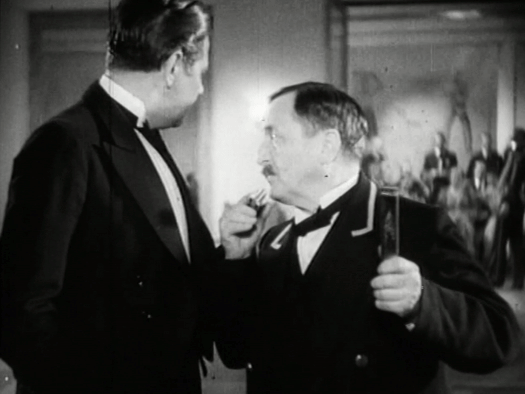
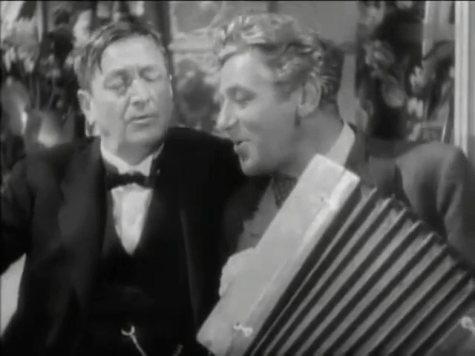
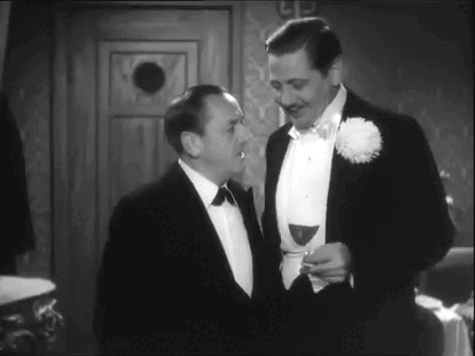
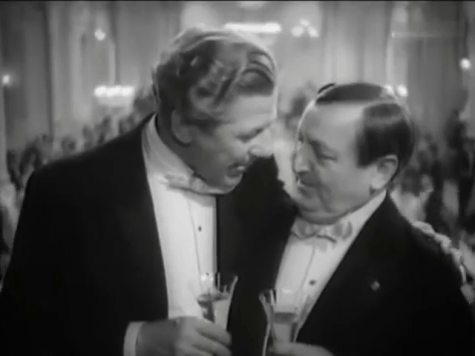



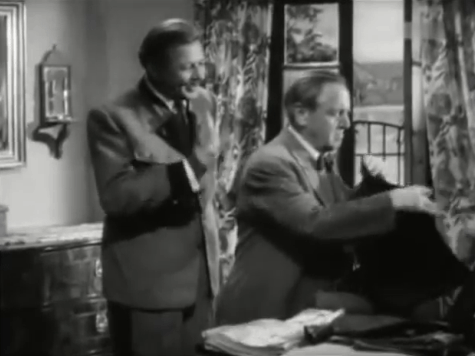
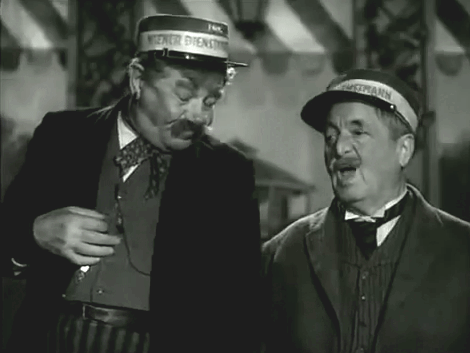
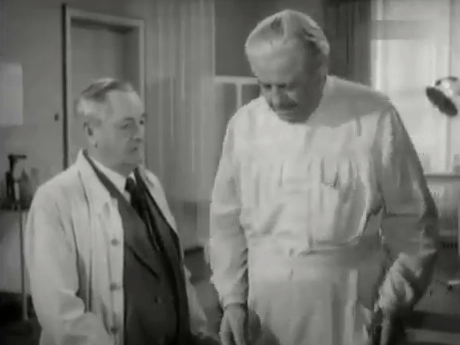
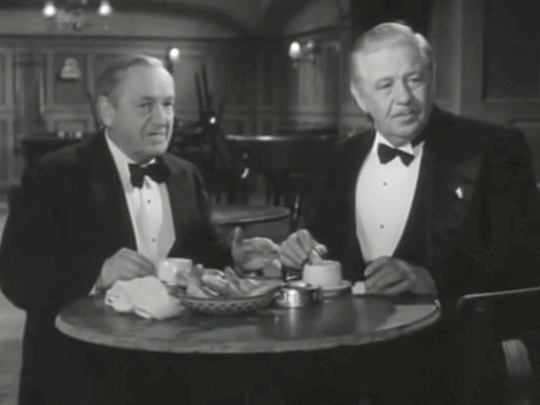


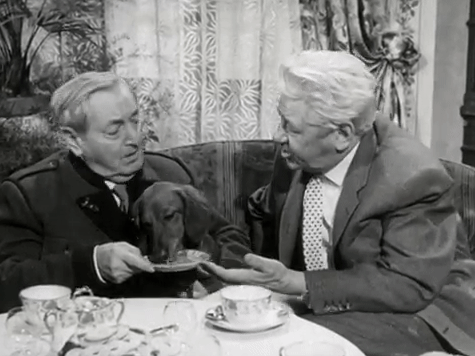
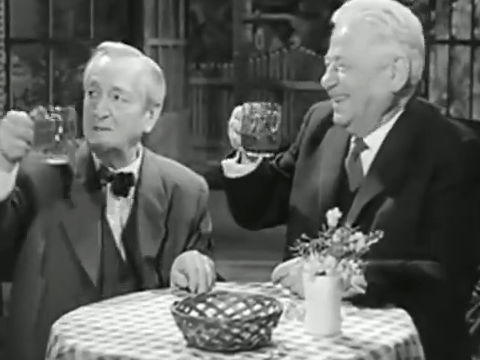
Hans Moser & Paul Hörbiger
#hans moser#paul hörbiger#MoHö#original odo edit#ollie's oldies#ollie's austrians#endstation#endstation 1935#schabernack#schabernack 1936#immer wenn ich glücklich bin#der opernball#der opernball 1939#wiener g'schichten#wir bitten zum tanz#schwarz auf weiß#schrammeln#schrammeln 1944#der hofrat geiger#hallo dienstmann#ja so ist das mit der liebe#ober zahlen#hallo taxi#und du mein schatz bleibst hier#freunde für's leben#drei liebesbriefe aus tirol#die bessren älteren herrn#only ones potentially missing because I couldn't find them: der verjüngte adolar (1935) and ... und wer küsst mich? (1956)#then there are seven more in which they are both credited but for a variety of reasons don't share the screen
1 note
·
View note
Text
Birthdays 9.30
Beer Birthdays
Frederick Wacker (1830)
Ludwig Narziss, a.k.a. Beer Pope (1925)
Alan Atha (1950)
Jesse Friedman
Five Favorite Birthdays
Robinson Crusoe; fictional character (1632)
Jenna Elfman; actor (1971)
Kate Fox; "Miss Match" (1976)
Buddy Rich; jazz drummer (1917)
Eric Stoltz; actor (1961)
Famous Birthdays
Trey Anastasio; rock guitarist (1964)
Monica Bellucci' Italian model, actor (1964)
Crystal Bernard; actor (1961)
Marc "T. Rex" Bolan; rock singer (1947)
Truman Capote; writer (1924)
Lacey Chabert; actor (1982)
Marion Cotillard; French actor (1975)
Angie Dickinson; actor (1931)
Fran Drescher; actor (1957)
Hans Geiger; physicist (1882)
Alan Hacker; English clarinetist (1938)
Deborah Kerr; actor (1921)
Johnny Mathis; singer (1935)
Marilyn McCoo; pop singer (1943)
W.S. Merwin; poet (1927)
Nevill Francis Mott; English physicist (1905)
Oscar Pettiford; jazz bassist, cellist (1922)
Michael Powell; film director (1905)
Robin Roberts; Philadelphia Phillies P (1926)
Jalal ud-Din Rumi; Afghan mystic, poet (1207)
Ryan Stout; comedian (1982)
Victoria Tennant; actor (1950)
Elie Wiesel; writer (1928)
Barry Williams; actor (1954)
William Wrigley; chewing gum tycoon (1861)
1 note
·
View note
Text
HR Geiger and Hans Bellmer are the only two men I grant permission to depict the female experience
2 notes
·
View notes
Text
Ok this is gonna be a really long post, so brace yourselves.
ALL my hear-me-outs
Geiger (Willem Dafoe) Speed 2: Cruise Control
Fritz (Hans Buhringer) Die Hard
The Weasley Twins (James and Oliver Phelps) the Harry Potter movies
Doc (Warren Stephens) Forbidden Planet
T-800 (Arnold Schwarzenegger) Terminator 2: Judgement Day
Thranduil (Lee Pace) The Hobbit movies
Caesar (Christopher Walken) Mouse Hunt
Seth (Rufus Sewell) Cold Comfort Farm
Norman Osborn (Willem Dafoe) Spider-Man (2002)
The Darkness (Tim Currey) Legend
Heroic Officer (Sting *cameo appearance*) The Adventures of Baron von Munchausen
Sir Galahad (Michael Palin) Monty Python and the Holy Grail
Go Go (voiced by Jamie Chung) Big Hero 6
Sweeney Todd (Len Cariou) Sweeney Todd (1979)
Basil Exposition (Michael York) Austin Powers
Claude LaComb (François Truffaut) Close Encounters of the Third Kind
Leland Drury (Alfred Molina) White Fang 2: Myth of the White Wolf
If anyone can think of other hear-me-outs, add them in the comments or reblog!
Ambassador Fox (Gene Lyons) Star Trek (the original series) A Taste of Armageddon (season 1, ep 23)
Alexei Kolchin (John Phillip Law) The Russians Are Coming, The Russians Are Coming!
0 notes
Link
Tal día como hoy, en 1882, nace Hans Geiger, físico alemán que introdujo el contador Geiger, el primer detector exitoso de partículas alfa individuales y otras radiaciones ionizantes.
https://buff.ly/3XNYeow
0 notes
Text
0 notes
Text
#hans gruber#hans#Gruber#grüber#Teutonic#hans gruber teutonic#brad#Geiger#brad geiger#celebrity#los angeles#celebs#youtube
4 notes
·
View notes
Text
No solo los organismos fotosintéticos, como las plantas y algas, generan oxígeno. En el corazón del Pacífico, a unos 4000 metros de profundidad, se ha descubierto que preciados nódulos polimetálicos lo pueden producir por electrólisis del agua marina. El hallazgo hace replantear la cuestión de dónde comenzó la vida aeróbica. Nódulos metálicos en el fondo marino de la zona Clarion-Clipperton, en el océano Pacífico. / ROV KIEL 6000, GEOMAR – Geomar Bilddatenbank Por Enrique Sacristán Un equipo internacional de investigadores ha descubierto que los minerales metálicos de las profundidades oceánicas, muy valorados por las compañías extractoras, son capaces de producir oxígeno a 4000 metros bajo la superficie, en completa oscuridad. Este sorprendente descubrimiento, publicado esta semana en la revista Nature Geoscience, pone en tela de juicio la creencia de que solo los organismos fotosintéticos, como las plantas, las algas o las cianobacterias, generan el oxígeno de la Tierra. El estudio revela que esta molécula se puede crear en los fondos marinos abisales, sin luz, y llegar a sustentar a los organismos aeróbicos que lo respiran. Este ‘oxígeno oscuro’ lo descubrió el ecólogo y biogeoquímico Andrew Sweetman de la Asociación Escocesa de Ciencias Marinas (SAMS, Reino Unido) mientras tomaba muestras del lecho marino de la zona Clarion-Clipperton, un área submarina montañosa que se extiende casi 6500 kilómetros en el noreste del océano Pacífico. Localización de la zona Clarion-Clipperton en el Pacífico. / USGS “Para que la vida aeróbica se iniciara en el planeta, tenía que haber oxígeno, y nuestra idea era que su suministro en la Tierra comenzó con los organismos fotosintéticos, pero ahora sabemos que se produce oxígeno en las profundidades marinas, donde no hay luz”, subraya Sweetman, “por tanto, tenemos que volver a plantearnos preguntas como dónde pudo comenzar la vida aeróbica”. Valiosos nódulos polimetálicos A unos 4000 m de profundidad, el investigador localizó el material clave: nódulos polimetálicos, algunos de los cuales fueron analizados por el catedrático de Química Franz Geiger de la Universidad Northwestern (EE UU), que dirigió los experimentos electroquímicos que explican potencialmente el hallazgo. “Estos nódulos, que hoy parecen un saco de patatas vaciado en el suelo, se han estado formando durante los últimos 100 millones de años a partir de iones disueltos en el agua marina del fondo oceánico”, comenta Geiger a SINC, “y los campos que los contienen pueden cubrir cientos de kilómetros en muchas partes del mundo”. Los organismos fotosintéticos generan oxígeno y azúcares a partir de CO2, agua y luz. Sin embargo, el ‘oxígeno oscuro’ se produciría por electrólisis del agua inducida por los minerales metálicos: “2H20 –> O2 + 2H2 sería la formula”, apunta el químico, “pero es importante señalar que los sensores utilizados en este estudio solo son sensibles al O2, no al H2, que todavía no sabemos si se está produciendo”. Algunos nódulos polimetálicos recolectados del fondo oceánico se han analizado en el laboratorio del químico Franz Geiger en la Universidad Northwestern (EE UU). / Franz Geiger/Northwestern University Geiger explica que los nódulos polimetálicos que producen este oxígeno contienen metales como cobalto, níquel, cobre, litio y manganeso, todos ellos elementos fundamentales para las baterías de dispositivos electrónicos: “Varias empresas mineras a gran escala pretenden ahora extraer estos elementos preciosos del fondo marino a profundidades de entre 3000 y 4000 metros bajo la superficie. Tenemos que replantearnos cómo extraer estos materiales, para no agotar la fuente de oxígeno para la vida en los fondos oceánicos”. Historia del descubrimiento Por su parte, Sweetman recuerda cómo comenzó esta investigación: “Cuando obtuvimos los datos por primera vez, pensamos que los sensores estaban averiados porque en todos los estudios realiz...

View On WordPress
0 notes
Text
Understanding Geiger Counters and Their Applications
Geiger counters are essential instruments used for detecting and measuring ionizing radiation, such as alpha, beta, and gamma rays. Simply put, a Geiger counter is a nuclear radiation detector.
Often perceived as either a relic of science fiction or a niche item for survivalists, the practicality of owning a Geiger counter extends far beyond these stereotypes. These devices are vital in fields such as nuclear research, environmental monitoring, and ensuring radiation safety.
The development of Geiger counters can be traced back to the early 20th century when scientists like Hans Geiger and Walther Müller made significant contributions to the understanding of radiation detection. Over the years, advancements in technology have led to the creation of more sophisticated and efficient Geiger counters.
Types of Geiger Counters
The choice of Geiger muller counter for sale on the market largely depends on its intended application, considering factors like sensitivity, energy resolution, and cost.
· Geiger-Muller counters These counters operate by using a gas-filled tube that generates an electrical pulse when ionizing radiation passes through it. The pulse is then amplified and counted, providing a measure of the radiation level. Advantages: Simple design, rugged construction, and relatively inexpensive. Disadvantages: Limited energy resolution and sensitivity.
· Scintillation counters Scintillation counters work by detecting the light flashes produced when ionizing radiation interacts with a scintillating material, such as sodium iodide or plastic. The light flashes are then converted into electrical signals and processed. Advantages: High sensitivity, good energy resolution, and ability to distinguish between different types of radiation. Disadvantages: More complex and expensive than Geiger-Muller counters.
· Proportional counters Proportional counters are similar to Geiger-Muller counters but operate at lower voltages, allowing them to measure the energy of the radiation as well as the count rate. Advantages: Excellent energy resolution and ability to distinguish between different types of radiation. Disadvantages: More complex and expensive than Geiger-Muller counters.

Applications of Geiger Counters
Geiger counters are utilized in various sectors for radiation detection and monitoring:
· Environmental monitoring: GM counters are used in radiation protection to monitor the levels of radiation in the environment. Construction sites, waste storage facilities, and transportation systems are some examples of environments that require radiation monitoring. GM counters can detect and quantify the radiation levels in these areas to ensure that the radiations do not exceed the safe limit and cause environmental damage.
· Nuclear industry: One of the main applications of GM counters is radiation monitoring in nuclear power plants. Nuclear power plants are designed to produce electricity from nuclear reactions, which can result in the emission of ionizing radiation. GM counters can detect and quantify the radiation levels in different areas of the plant, providing real-time safety alerts if radiation levels reach dangerous levels.
· Scientific research: GM counters also play a crucial role in scientific research involving radiation. Scientists use radioactive materials in various experiments, and GM counters can help them measure the amount of radiation emitted by these materials. This information is essential for understanding how radiation interacts with biological tissues and for developing radiation therapies for cancer treatment.
Homeland security and law enforcement:
Geiger counters can be used to detect and prevent the illegal transportation of radioactive materials, as well as in emergency response situations involving nuclear incidents.
Other applications:
Geiger counters also find use in fields such as medicine (for calibrating radiation therapy equipment), construction (for detecting naturally occurring radioactive materials), and education (for teaching and demonstrations).
Why do we need Geiger-Muller counters?
GM (Geiger-Mueller) counters are essential tools in various fields, especially in nuclear physics and radiation protection. These instruments are designed to detect and quantify ionizing radiation, such as alpha, beta, and gamma particles. Ionizing radiation is harmful because it has enough energy to remove electrons from a molecule, which can cause cellular damage and DNA mutation.
Therefore, the need for GM counters is to ensure safety measures are implemented in places where radiation sources might be present. For a reputable selection of quality Geiger counter for sale, consider exploring the offerings on nucleardetector.org.
It is important to remember that if you are concerned about radiation levels in your home, you should seek professional advice. Radiation can be very dangerous, and it is important to take every precaution when handling it. If you suspect that there may be high levels of radiation in your home, contact a licensed radiation expert to come and assess your home.
0 notes
Text

RHYTHM SECTION OFFBEATS
NOVEMBER 3-19 2016 KARşI SANAT GALLERY ISTANBUL
Christoph Dahlhausen (DE) Mert Diner (TR) Ekmel Ertan (TR) Daniel Geiger (DE) Oleksiy Koval (DE) Markus Krug (DE) Çağrı Saray (TR) İsfendiyar Söyler (TR) Nermin Ülker (TR) Veronika Wenger (DE) Michael Wright (GB)
Curated by Dmytro Goncharenko
Since the beginning of European modernism, the concept of rhythm has of recurrent significance to art practice. The concept of Rhythm is not only a sequence of signs but a sequence of actions. It is a structuring category that controls the conscious perceptions and reception of art as a whole. The group Rhythm Section is about the centrality of rhythm in contemporary art practice now, to explore as a collective a process of exchange about the issue of rhythm. The exchange and the dynamic that arise from research and the gathering of different approaches and media provide new starting points for the practice of art. Through presentations of different types of works in various sectors of the contemporary art scene, Rhythm Section seeks to stimulate an exchange of artists of different nationalities and help to form a network. The current list of artists who are part of the project is characterized by a variety of media and disciplines, including painting, drawing, printmaking, installation, digital, film, video, performance and music.
This project is funded by City of Munich Department of Arts and Culture
Opening on Thursday, November 3rd at 7:00 pm
Gazeteci Erol Dernek Sokak No 11/4 Hanif Han 34420 Beyoğlu/Istanbul Turkey Phone : +90 (212) 245 71 53 – 54 E-Mail : [email protected]
0 notes
Text
The Unique Allure of the Technical University of Munich
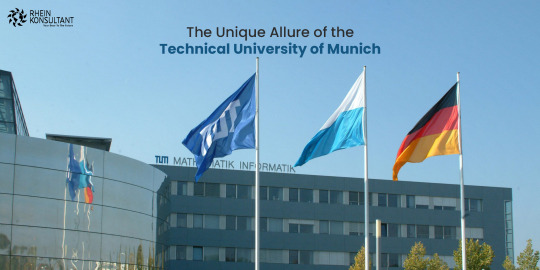
The Technical University of Munich (TUM) is not just a typical institution of higher education; it’s a beacon of inspiration, innovation, and transformation. Established in 1868, TUM has flourished into a global epicenter for research, creativity, and learning. What makes TUM truly special? In this article, we’ll delve into the vibrant heart of TUM’s exceptional appeal, sprinkled with the real-life experiences of illustrious alumni who’ve made their mark on the world.
1. Academic Excellence: TUM’s devotion to academic excellence is evident through its rigorous programs and world-class faculty. It consistently ranks among the world’s top universities, a testament to its unwavering pursuit of scholarly brilliance. Notably, Nobel laureate Ernst Otto Fischer an alumnus, exemplifies this excellence. Fischer’s groundbreaking work in organometallic chemistry earned him the Nobel Prize in Chemistry in 1973.
2. Research Prowess: TUM is renowned for pioneering research efforts that have reshaped our world. With numerous research centers, it fosters a culture of curiosity, imagination, and audacity. A prominent alumnus, Rudolf Mössbauer received the Nobel Prize in Physics in 1961 for his pioneering work on the Mössbauer effect, which transformed the field of solid-state physics.
3. Industry Collaboration: TUM’s partnerships with industry giants have resulted in groundbreaking innovations. Wernher von Braun, an alumnus who became a prominent figure in the development of rocket technology, including the Saturn V moon rocket for NASA, is a striking example of TUM’s industry impact.
4. Interdisciplinary Approach: TUM champions interdisciplinary exploration, recognizing that the world’s most pressing challenges demand holistic solutions. The extraordinary career of Hans Geiger, an alumnus who co-invented the Geiger-Müller counter, a vital tool in nuclear physics and radiation detection, is a testament to the power of multidisciplinary thinking.
5. Global Network: TUM’s global connections enrich the educational experience. Alumna Angela Merkel, the former Chancellor of Germany, is a shining example of TUM’s international reach. Her leadership on the global stage demonstrates the influence of TUM alumni in shaping the world’s destiny.
6. Munich’s Unique Advantage: Nestled in Munich, TUM enjoys the city’s vibrant culture and technological dynamism. This unique location has attracted renowned alumnus Carl von Linde, the inventor of the refrigerator and a pioneer in the field of mechanical engineering.
7. English-Taught Programs: TUM’s embrace of English-taught programs has attracted students worldwide, creating a rich, diverse academic environment. Alumnus Martin Winterkorn, the former CEO of Volkswagen Group, embraced the international ethos of TUM and advanced it further in the corporate world.
8. Strong Alumni Network: TUM’s extensive and influential alumni network offers mentorship and connections for students. Alumna Ulrike Sapiro, the co-founder of “LinkedIn for Scientists” (ResearchGate), exemplifies how TUM alumni continue to excel and inspire others.
9. Emphasis on Sustainability: TUM’s commitment to sustainability is reflected in the work of alumna Ursula Sladek. She founded the first eco-friendly energy cooperative in Germany, promoting renewable energy and inspiring a new wave of environmental consciousness.
10. Cultural and Extracurricular Opportunities: TUM offers a rich tapestry of cultural and extracurricular activities. Alumnus and filmmaker Florian Henckel von Donnersmarck, an Academy Award winner, found inspiration at TUM that eventually translated into captivating stories on the silver screen.
11. Scholarships and Financial Support: TUM’s dedication to financial support has made it accessible to talented individuals from diverse backgrounds. Alumnus Martin Schoeller, a renowned portrait photographer, embodies how TUM opens doors to those with a passion for the arts.
12. Innovative Facilities: TUM’s investment in cutting-edge facilities catalyzes groundbreaking research and creative endeavors. Alumna Lisa Davis, a member of the Managing Board of Siemens AG, knows the importance of advanced infrastructure in advancing industry and society.
13. Start-Up Culture: TUM’s vibrant start-up ecosystem has nurtured countless entrepreneurial success stories. Alumnus Oliver Samwer, the co-founder of Rocket Internet, exemplifies how TUM fosters innovation and fosters entrepreneurial spirit.
14. Commitment to Diversity and Inclusion: TUM’s inclusive ethos is evident in the story of alumna Auma Obama, who works tirelessly to empower marginalized communities in Africa through education and social entrepreneurship.
15. Commitment to Social Responsibility: TUM doesn’t just create scholars; it nurtures socially responsible leaders. Alumna Barbara Stoll, an accomplished physician and advocate for women’s health, dedicates her life to the betterment of society.
Real-Life Experiences and Important Links for Prospective Students:
– Experience from Nobel Laureate Ernst Otto Fischer: Watch Video – Explore TUM’s International Programs: TUM International – TUM’s Alumni Success Stories: Alumni Success – TUM Scholarships and Financial Aid: Financial Support – TUM’s Research Centers and Facilities: Research at TUM – TUM’s Start-Up Support: TUM Entrepreneurship Center – Diversity and Inclusion at TUM: Diversity Office
The Technical University of Munich is a captivating institution known for its unwavering dedication to academic brilliance, cutting-edge research, and a global perspective. Its vibrant alumni network, including Nobel laureates, industry pioneers, world leaders, and entrepreneurs, showcases TUM’s exceptional impact on the world. TUM’s legacy of excellence, innovation, and commitment to positive change ensures its place among the most esteemed universities globally. For students considering their higher education journey, TUM stands as a compelling choice, offering a world of opportunities.
Also read: – The Evolution of German Automotive Engineering: From the First Cars to the Future of Mobility
#bachelor in germanyb#master in germany#pg in germany#nursing in germany#germany visa#best university#germany government#bachelor in germany#free education in germany
1 note
·
View note